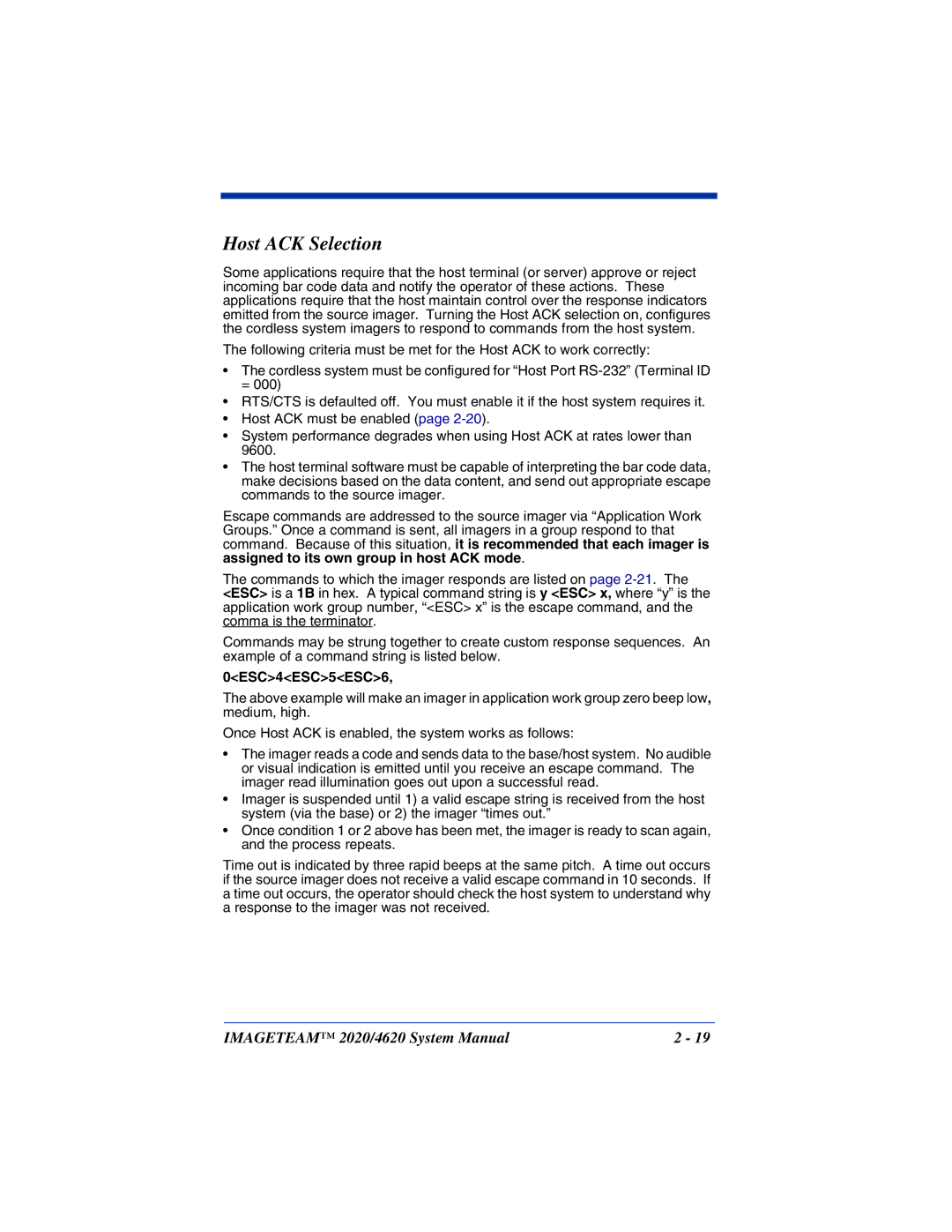
Host ACK Selection
Some applications require that the host terminal (or server) approve or reject incoming bar code data and notify the operator of these actions. These applications require that the host maintain control over the response indicators emitted from the source imager. Turning the Host ACK selection on, configures the cordless system imagers to respond to commands from the host system.
The following criteria must be met for the Host ACK to work correctly:
•The cordless system must be configured for “Host Port
•RTS/CTS is defaulted off. You must enable it if the host system requires it.
•Host ACK must be enabled (page
•System performance degrades when using Host ACK at rates lower than 9600.
•The host terminal software must be capable of interpreting the bar code data, make decisions based on the data content, and send out appropriate escape commands to the source imager.
Escape commands are addressed to the source imager via “Application Work Groups.” Once a command is sent, all imagers in a group respond to that command. Because of this situation, it is recommended that each imager is assigned to its own group in host ACK mode.
The commands to which the imager responds are listed on page
Commands may be strung together to create custom response sequences. An example of a command string is listed below.
0<ESC>4<ESC>5<ESC>6,
The above example will make an imager in application work group zero beep low, medium, high.
Once Host ACK is enabled, the system works as follows:
•The imager reads a code and sends data to the base/host system. No audible or visual indication is emitted until you receive an escape command. The imager read illumination goes out upon a successful read.
•Imager is suspended until 1) a valid escape string is received from the host system (via the base) or 2) the imager “times out.”
•Once condition 1 or 2 above has been met, the imager is ready to scan again, and the process repeats.
Time out is indicated by three rapid beeps at the same pitch. A time out occurs if the source imager does not receive a valid escape command in 10 seconds. If a time out occurs, the operator should check the host system to understand why a response to the imager was not received.
IMAGETEAM™ 2020/4620 System Manual | 2 - 19 |
